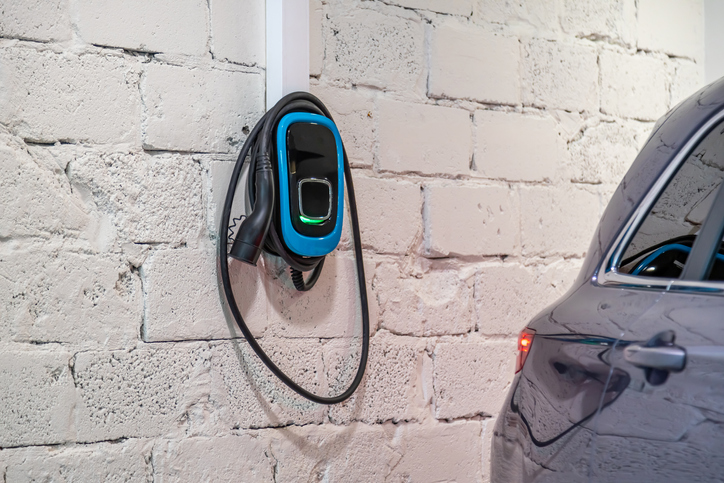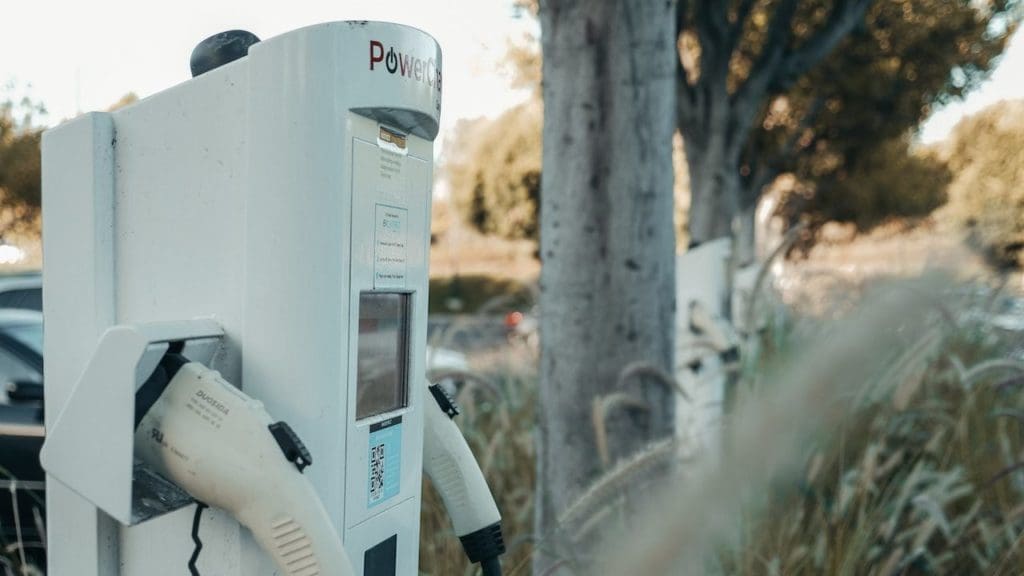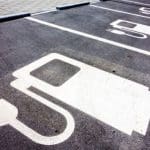With the rapid rise of electric vehicle (EV) adoption in Australia, apartment residents and building managers are facing unique challenges around installing EV charging infrastructure in strata buildings. From navigating complex legal requirements and securing body corporate approval to ensuring the building’s power infrastructure can handle the load, careful planning is essential for a smooth and successful installation. We’ll also explore government incentives, installation options, and custom solutions to help you navigate both technical and legal requirements with ease.
Solar Choice offers expert, end-to-end support for apartment EV charging across Australia. Whether your apartment EV Charger project is in Sydney, Melbourne, Brisbane, or beyond, we guide you through every step—from navigating legal requirements and understanding installation costs to selecting the ideal charging solutions for your building. Our mission is to make EV charging simple, affordable, and fully compliant, helping you future-proof your property for Australia’s rapidly growing electric vehicle market.
Ready to make the switch? Let’s dive into what you need to know about EV charger installation in Australian apartments.
Key Takeaways: How to Install EV Chargers in Australian Apartments
- Navigate Strata Laws & Approvals: Installing EV chargers in apartment buildings requires body corporate approval and compliance with strata laws. A feasibility assessment is crucial to evaluate power availability and infrastructure needs.
- Charger Types & Installation: Choose between Level 1 (basic, slow, plug-in chargers) or Level 2 (faster, requires installation) chargers for apartments. DC fast chargers are not practical due to high infrastructure demands.
- Assess Feasibility First: Conduct a Feasibility Study to assess your building’s electrical capacity, the cost of EV charging in apartments, and potential upgrades. This critical step ensures the infrastructure can support EV chargers for all owners, preventing potential power overloads and mitigates costly risks & challenges down the line.
- Cost Overview: Initial backbone infrastructure typically range from $1,000 – $4,000 per apartment, with individual charger installation costs between $2,000 – $4,000. Costs will vary depending on your building’s specific infrastructure needs—explore more details below to see how these estimates might apply to your project.
- Maximise Property Value & Convenience: Installing EV chargers boosts property value, attracts renters or buyers, and supports Australia’s growing electric vehicle market. It also future-proofs your building, making it more appealing as EV adoption continues to rise.
- Expert Support: Solar Choice provides expert, hands-on support, guiding you through every step of the EV charging process—from feasibility assessments to approvals and beyond installation. Our goal is to make this complex process seamless and stress-free for all involved.
Not sure where to start? Get some free advice from one of our consultants!
The Basics of EV Charging for Apartments
Electric vehicle charger types: Choosing the best EV charger for your apartment Building
- Level 1 Chargers: These chargers can be plugged into a standard electrical outlet and are typically used for charging at home. Although they’re convenient and require no additional setup, they charge rather slowly.
- Level 2 Chargers: A step up from Level 1, these chargers need a dedicated circuit and deliver a higher charging speed. They’re often found in commercial settings but can be installed at home with the right setup.
- DC Fast Chargers: Not feasible for apartment complex EV charging due to their hefty infrastructure requirements.
How to get started?
What’s included in EV Charging Feasibility Assessment?
- Site Survey: Organising a qualified and experienced electrician to complete a detailed site survey of all the existing electrical infrastructure, including the incoming mains, main switchboard, meters and breakers, parking bays and potential cable pathways
- Power Monitoring: Installing a temporary power consumption logger onto the incoming mains so we can determine the power consumption within the building and how much available capacity exists to dedicate to EV Charging
- Engineering Review: Solar Choice’s engineering team will review all collected information from site and set out the recommended options for enabling EV charging infrastructure for all apartment owners, including staging out the project where possible to avoid a big upfront cost
- Consultation: A Solar Choice consultant will explain the recommendation and finds to the owners
- Recommendation: Solar Choice can recommend an reputable electrical contractor in every state with experience installing EV charging infrastructure within apartment buildings.
End-to-End Project Support:
Get a quote for a EV Charging Feasibility Study for your Apartment Building
Installing EV Chargers in Apartments: Risks & Challenges
Firstly and foremost, almost every strata apartment building we have examined does not have sufficient power supply for every parking space to have an operating EV Charger without tripping the power supply to the whole building. You might be able to get away with the first couple of EV Chargers, but at some point you are going to need a solution.
Speak to an expert about EV Charging for your building
EV Charging Solutions for Apartments: Installation Options
Visitor parking bays
Trickle charging only
Solar Choice Case Study – Level 1 EV Charging Solution for 24 Unit Apartment Building in Sydney.
Level 2 EV Charging with Load management systems
| How They Work | Evaluation | |
| Branded Solutions | Some EV Charger companies have developed a solution to manage a ‘fleet’ of their chargers in real-time. This usually involves attaching a meter and a central management device to the incoming mains to the building and communicating with each EV Charger via wifi or data cable. Examples: Schneider, Ocular | Pros: – Simpler system, easier to maintain – Single type of charger going into garage better aesthetically Cons: – Every owner must install the same EV Charger which reduces choice |
| OCPP / Universal | Some load management systems utilise Open Charge Point Protocol (OCPP) to communicate with any EV Charger that has OCPP built in. This creates additional complexity as the load management system needs to keep up with all the software updates of each charger, however enables users to choose from a broader range of EV Charger brands. Examples: Jetcharge, Combined Energy | Pros: – Greater choice of EV chargers – Potentially options to switch LMS providers in the future Cons: – Load management provider needs to stay across updates in firmware/software to all connected charger brands |
Benefits of installing an EV charger in your apartment
Flexibility for Owners
Increased Property Value
Improve Charge Speeds and Solar Integration
The Role of Smart EV Charging in Apartments
With advancements in EV technology, smart charging solutions are becoming essential for apartment buildings. These systems offer dynamic load management, real-time energy tracking, and scheduled charging to optimize power distribution and lower electricity costs.
Benefits of Smart EV Charging:
- Dynamic Load Balancing: Ensures chargers do not exceed building power limits.
- Energy Cost Optimisation: Enables off-peak charging, reducing electricity costs for residents.
- Remote Monitoring & Access Control: Allows owners and strata managers to control charging remotely.
- Billing Transparency: Automatic tracking and fair electricity usage billing for each resident.
How much does it cost to install an EV charger in an apartment?
- Installing the backbone infrastructure to enable EV Charging – anywhere from $1,000 to $4,000+ per apartment (usually paid by Body Corporate)
- Installing individual EV charger withing relevant parking bay – typically around $2,000 to $4,000 (usually paid by the relevant owner when they are ready)
- Can the charger be wall-mounted or is a free-standing solution required?
- Will a bollard need to be installed to prevent vehicles from accidentally reversing into the charger?
- What distance a cable will need to travel to connect to the main switchboard or closest sub-distribution board?
- Will trenching or core holes be required for the cable run?
Get a quote for a EV Charging Feasibility Study for your Apartment Building
What are the voting and strata requirements for EV charging decisions?
Can I just install my own EV charger at my apartment?
EV Charging Access Now Part of the National Construction Code (NCC) for New Apartment Buildings
Australia is making it easier for apartment dwellers to access EV charging. The National Construction Code (NCC) has introduced new requirements to ensure new apartment buildings are ready for electric vehicles.
What This Means for New Developments
- Future-Proofing Apartments: Developers must now install electrical infrastructure that supports EV chargers in new apartment buildings.
- Power Supply Requirements: Electrical distribution boards in apartment car parks must be capable of supporting a minimum of 12 kWh per EV charger between 11:00 pm and 7:00 am daily.
- Upcoming NCC 2025 Updates: The next NCC revision may mandate actual EV charger installations in a certain percentage of car parks, making access even more convenient.
For buyers and renters, this means that future apartment buildings will have built-in EV charging capability, avoiding expensive retrofitting later.
Kerbside Charging: A Game-Changer for Apartment EV Owners
Not every apartment comes with a parking space, which is why kerbside charging is emerging as an alternative for EV owners who park on the street.
How Kerbside Charging Works
- Public Chargers on Streets: Some councils and energy providers are installing chargers on power poles and streetlights, turning public parking spots into EV charging stations.
- Government Support: The NSW Government has committed $10 million to expanding kerbside EV charging in high-density urban areas.
- Ausgrid Trials: Energy provider Ausgrid is testing innovative kerbside charging solutions, using existing power infrastructure to make charging accessible where private parking isn’t available.
For apartment residents without a garage or designated parking spot, these developments offer a practical way to own and charge an EV conveniently.
Learn About EV Charging in Apartment With Solar Choice’s Free Education Series
We’ve translated our knowledge from completing hundreds of feasibility studies for strata apartment buildings across Australia into a 10 part video educational series. This is designed to give an apartment owner the knowledge they need to lead a project in their building and to upskill strata managers and electricians to understand how to better assist owners corporations.
- Episode 1: Getting Started
- Episode 2: EV Charging ‘Backbone’ Infrastructure
- Episode 3: Individual vs Common Area Meters
If you prefer to learn in video format then its all set up for you in a Youtube Video Playlist.

Frequently Asked Questions (FAQs)
Due to the high power requirements, installing a DC Fast Charger is generally not feasible for electric car charging in apartment blocks.
While there are no specific incentives for EV charging stations for condos, some states offer general incentives for sustainable upgrades, which can include EV chargers.
Yes, it’s necessary to inform your home insurance provider about the new addition to ensure you’re covered.
The answer varies depending on the type of charger used: A Level 1 charger can take 24 hours or more to fully charge a battery from flat, while a Level 2 charger can do this in 4 to 6 hours. Understanding this will help you select the right charging solution for your apartment.
The choice of an EV charger for rental properties depends on several factors including the type of EVs owned by tenants, the electrical infrastructure of the property, and budget considerations. Level 2 chargers are generally recommended for their faster charging capabilities and suitability for overnight charging.
The answer varies based on your apartment’s infrastructure, but many find Level 2 chargers to be a suitable option for faster home charging. Tesla chargers which are able to provide this level of charging.
Conclusion
Not sure where to start? Get some free advice from one of our consultants!
Further Reading
- Solar Panel Costs: Solar Choice Price Index | April 2025 - 1 April, 2025
- Solar Panels For Homes – All You Need to Know About Solar Systems - 18 March, 2025
- Best NSW Solar Feed-In Tariffs - 17 March, 2025




